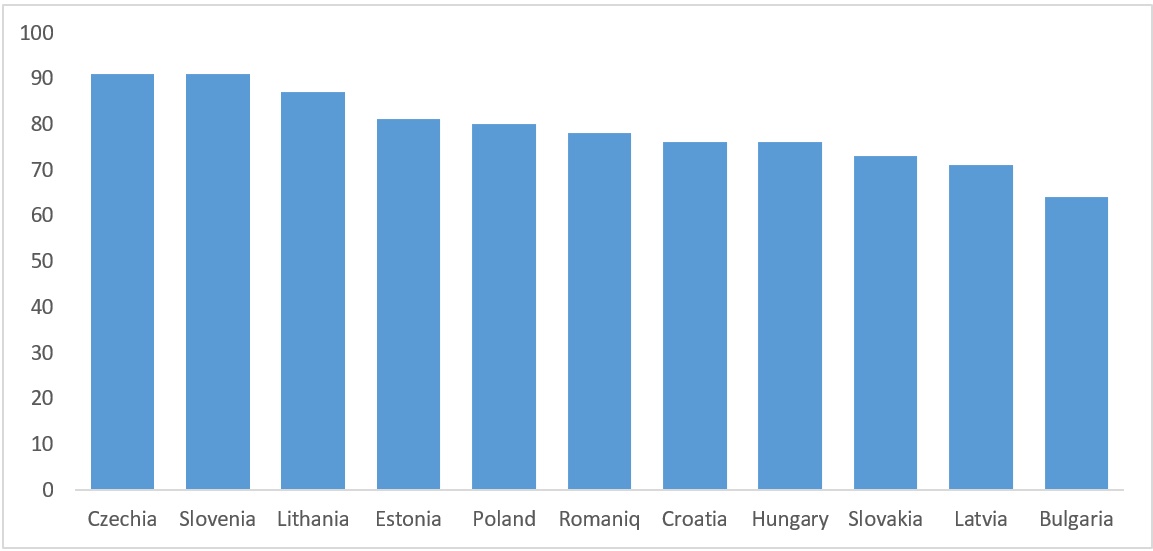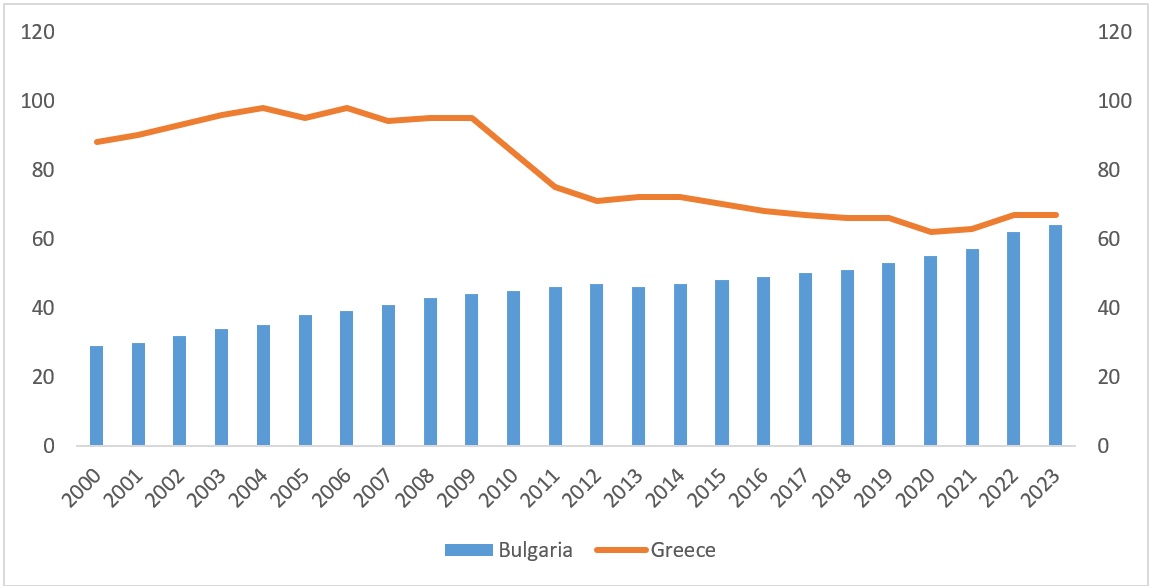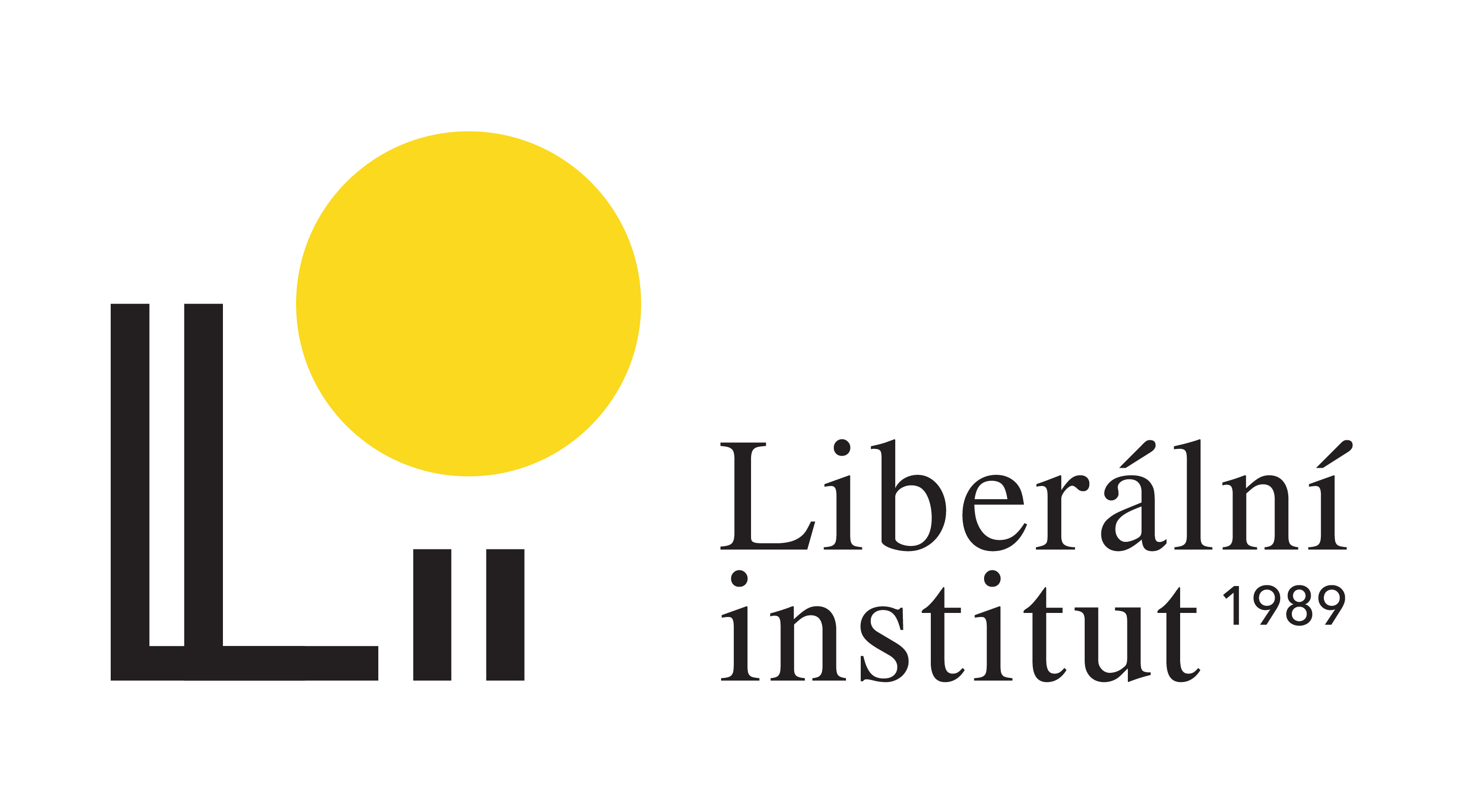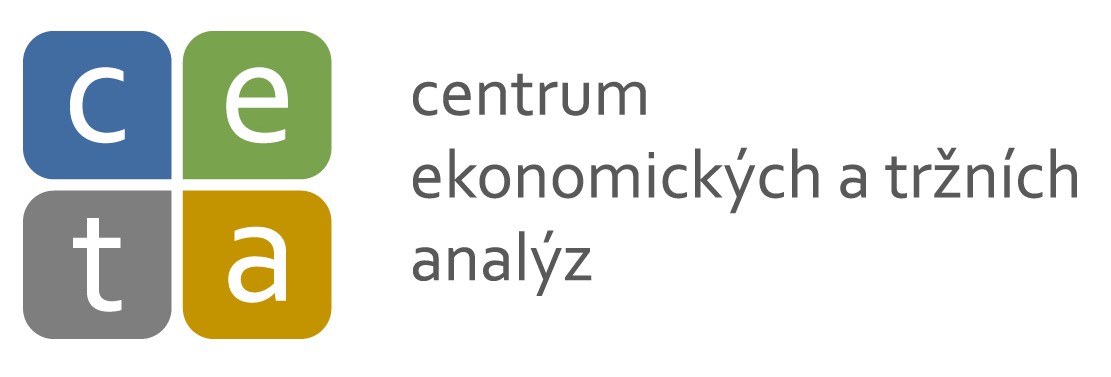
Bulgaria’s per capita gross domestic product in purchasing power parity terms has reached 64% of the European average in 2023. This is one of the indicators that most accurately shows convergence within the European Union, as it takes into account the differences in prices across countries and therefore gives fully comparable values. The well-known expression “Bulgaria is the poorest country in the EU” is often based on this indicator. Taking into account the economic dynamics in the country, it seems likely that in the coming years, we will peel off from the bottom of the ranking.
Bulgaria has recorded a steady improvement in convergence indicators over the last two decades. Despite at least three crises that have hit us, and respectively three periods of negative growth in the last 20 years, namely the prolonged recession of 2009 in the wake of the global financial crisis, the shallow recession and the low growth of 2012-2013 in the wake of the European debt crisis, and the deep recession of 2020 in the wake of the pandemic and severe social austerity, Bulgaria has almost invariably had higher growth than the EU average.
Bulgaria’s GDP per capita in purchasing power parity terms rises from below 40% before EU membership to 64% in 2023. Since the pandemic, Bulgaria has seen strong growth, including due to census and population adjustment, with the indicator improving by 9 percentage points in just three years.
In recent years, all the new Central and Eastern European (CEE) member states have been within 70-90% of the EU average, including Romania. By 2021, Bulgaria remained the only country in the EU that had not broken through the 60% mark and was therefore 10-15 percentage points behind even the underperforming new CEE member states. Achieving 64% in 2023 already brings us closer to the group of CEE countries that are also improving their performance, but still in the range between 70 and 90% of the European average. Only the Czech Republic and Slovenia have passed the 90% mark, while Latvia, Slovakia, Hungary, Croatia and Romania are in the 70-80% range.
Chart: GDP per capita in purchasing power standards in the new CEE member states (% of EU average, 2023)

The comparison with Greece, which has seriously deteriorated its convergence indicators in the last two decades, is interesting. 20 years ago the gap between Bulgaria and Greece was huge – in 2004 our southern neighbor reached its maximum of 98% compared to the EU average, while in Bulgaria the indicator was at the level of 35%. This is over 60 percentage points difference or, to put it another way, Greece is three times ahead of Bulgaria in terms of the physical volume of the economy per person and taking into account price differences.
By 2023, the gap has melted to just 3 percentage points – 64% for Bulgaria versus 67% for Greece. If we continue the trend of catching up and achieving good economic growth in the coming years, it is quite possible to leave behind the last position and approach 70% of the EU average.
Graph: GDP per capita in purchasing power standards in Bulgaria and Romania (% of EU average, 2000-2023)
This look at the convergence of Bulgaria and the other CEE countries to the EU average is particularly relevant against the backdrop of another political crisis and upcoming elections in the country.
Leaving aside the much daily noise, the big goal for the country’s economy is to reverse the trend of the last two years of slowing economic growth in the short term and in the long term to achieve a third decade of sustained catching-up and, therefore, convergence with the other successful CEE countries. This is achieved with macroeconomic stability and the implementation of reforms that stimulate investment and growth and limit waste. Whether before or after elections, this should be the main objective for policymakers, who are again among the risk factors for economic growth.

























